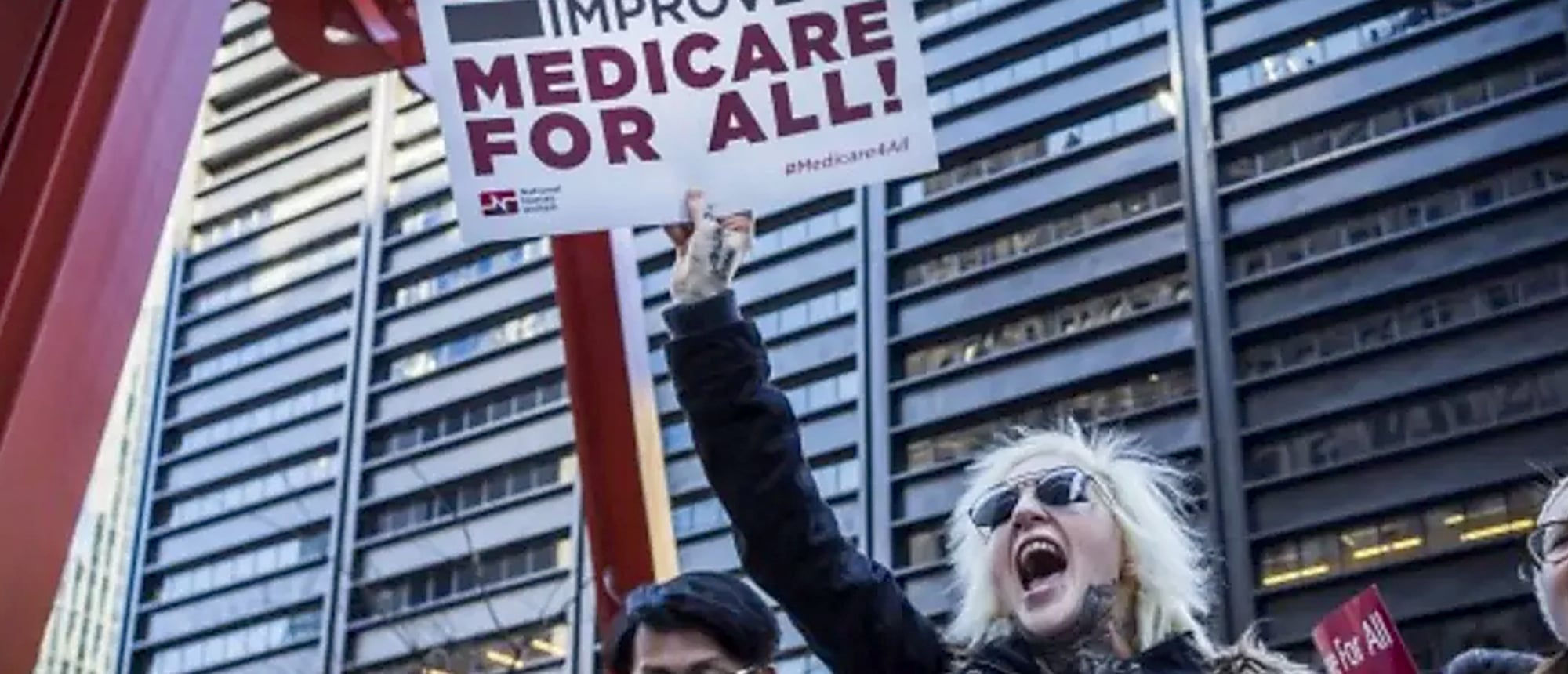Concerning Medicare For All, It’s Not A Time For Can’t
I have a request for the pundits, editorial boards, and especially politicians, seemingly sympathetic to Medicare for All, but who dwell on its supposed infeasibility and limitations: please take a time out.
When it comes to seeking universal healthcare in the U.S. since the 1940’s (decades behind Germany even then), we have literally tried everything except what is popular and works: Medicare for All.
So let’s do what everybody benefits from, on behalf of everybody. It’s literally true, and why it scares the elite so much: universal healthcare is… wait for it… universal!
Who knew?
The non-universal character of our present healthcare industry may be the biggest barrier to achieving an improved and expanded version of Medicare, the most efficient, cheapest, and provider-friendly—but not perfect—part of what could be a health system that promotes health, saves lives, and creates a sense of social solidarity.
Many of the nation’s insured still feel real health insecurity?. As examples: 29 percent of those with insurance in 2016 didn’t get some type of care due to cost and 40 million US residents are classified as under-insured. According to a new survey from the International Foundation of Employee Benefit Plans, cited by Benefit News, even the 160 million workers with employer-sponsored insurance are subject to increasing costs—an average deductible of $1,491 for individual coverage and $2,788 for family coverage.
Employer-based insurance, by the way, is far from guaranteed. As policy analyst Matt Bruenig put it over the weekend:
…if you like your employer insurance, I have some really bad news about what happens to it when you change jobs and when your employer finds a cheaper insurer to use…
— Matt Bruenig (@MattBruenig) February 2, 2019
In addition, the unsubsidized insurance premiums the worker must pay for a family are not subject to any cost-sharing limits. Thirty-six percent of Americans are in high-deductible plans with an average deductible of $4,347 or higher. Co-pays vary, and a few exceptional employer plans have no or little out of pocket expenses, typical of executive benefits and those in well-established public sector bargaining units who have foregone raises and successfully fought to maintain benefits.
Medicaid was designed to be a safety net but has instead become a lifeline for those who need long-term care, assistance with daily living, services for the disabled, rehab, and children with special needs. Yet because it provides services to the politically disadvantaged, providers receive inadequate reimbursement, states privatize coverage, and the program constantly faces budget constraints. As the pro-industry ideologues in the Trump Administration impose work requirements on Medicaid recipients (75% of whom already work), healthcare is being taken from tens of thousands of people who need it most.
No wonder with so many workers on the edge—literally making choices over getting a broken bone cast or medications for a sore throat, instead of groceries or the water bill—healthcare feels to many Americans like something only other people get. The high cost of healthcare is the central economic fact for most workers, revealed by the comparison between the cost of a “simple” ER visit or insurance deductible and the reality that 40% of Americans do not have $1000 in the bank for an emergency.
Imagine if everyone felt secure that they and their families would get the healthcare they need. We would not need $5 to see a doctor. Imagine not having to hassle with an insurance company to get an MRI, or the daily struggle to get services for a sick or struggling child in the shifting terrain of plans, coverage, public eligibility, and never-ending complexity. Even hospital CFOs are losing confidence they can adapt to new business models.
We do not have to organize our policy choices around the resentment toward those who only seem to have better benefits, and desperation to hang onto whatever plan we have fought to keep (even though 30% of employers switch health plans every year). We would no longer be riven by the disparities that plague healthcare, which are primarily financial and result in unnecessary deaths, complications, and economic hardship that seep into all areas of our lives. Instead, we would all have a stake and reason to support a healthcare program that isn’t vastly better for some than most, and isn’t based on ability to pay.
In contrast to the current for-profit system, Medicare for All guarantees healthcare based on patient need determined by the professional judgment of doctors, nurses and other caregivers. This is an improved and expanded version of the traditional Medicare model of public financing and administration in a mostly privately-delivered healthcare system. Medicare for All would consolidate the program into one part, replace Parts B and D, mimic the expansive benefits of Medicare Advantage, eliminate all existing co-pays for seniors (and for everyone else), eliminate all commercial insurance premiums paid by employers and individuals. Comprehensive benefits—all medically necessary treatments, including mental health needs, approved by a participating provider and complete choice of any participating provider—would come with a prohibition on balance billing. And while maximizing the ability to control costs, the intention is to include all residents of the United States so that nobody is excluded from receiving the care they need when they need it.
Instead of only the healthcare we can afford—leaving tens of millions out and uncertain—let’s guarantee we all get the healthcare we need.

